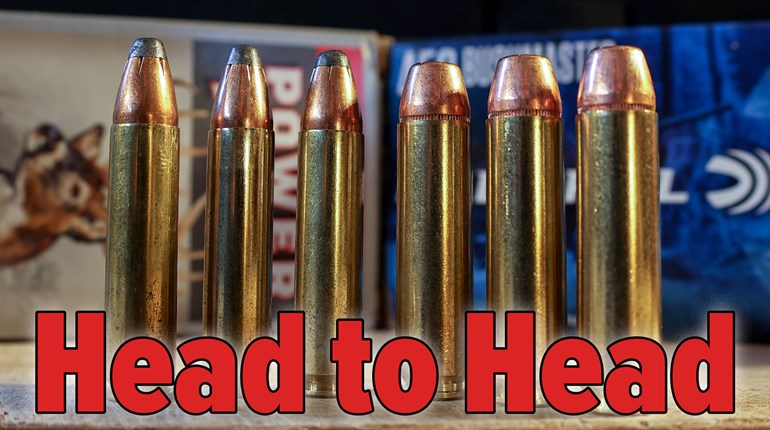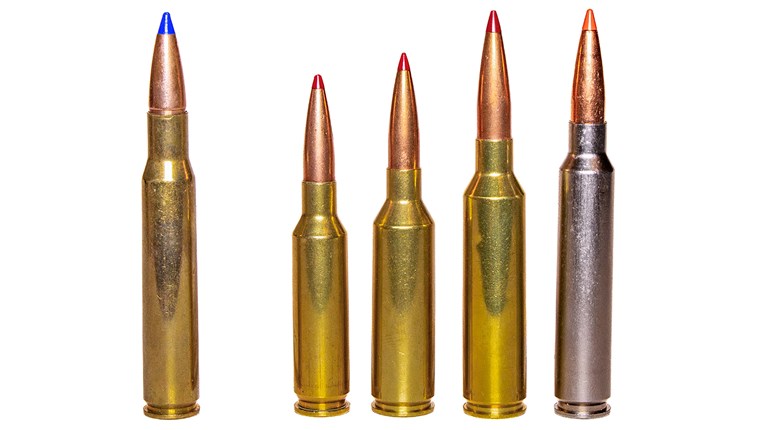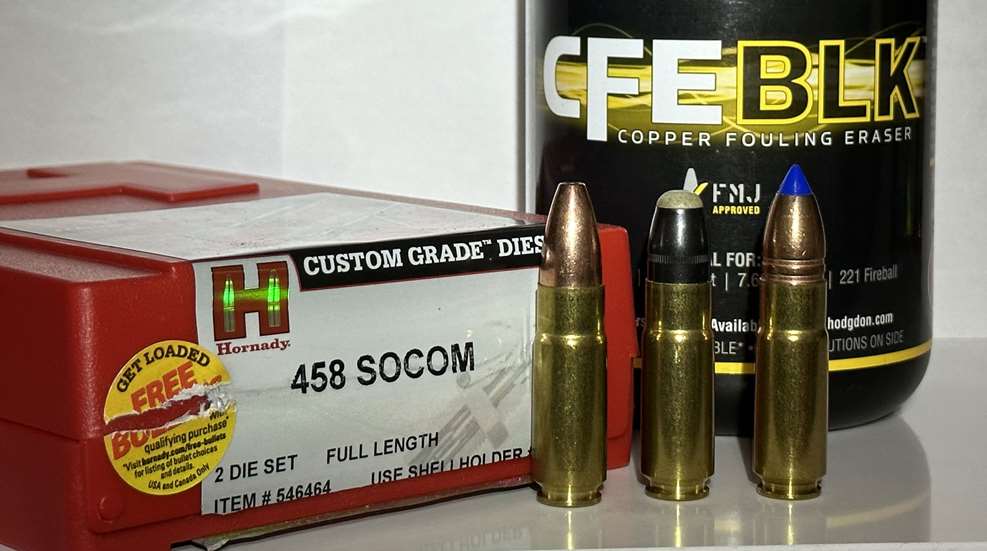
Last time in this series, we discussed the 6X45—sometimes called the 6mm-.223 or the .243-.223—and why it’s a far better all-around cartridge than the common .223 Remington (to review, it can tackle big-game far better than the .223 Rem. is able, and it still has solid varmint capabilities when using bullets made for other animals like coyotes and prairie dogs). This go ’round we’re hitting the opposite end of the spectrum: two big-bore powerhouses in the .45-70 Government and a relative newcomer, the .458 SOCOM; the latter is a favorite of mine, and you’re about to see why.
Let me clarify—there’s nothing inherently wrong with the .45-70 Government. After all, it did amazing things both historically and ballistically … when it was the only practical big-bore cartridge prior to the 20th century. In all seriousness, it did a lot of cool stuff. It survived the shift from black powder to smokeless powder (and is probably the most popular cartridge to do so). It was legendary among frontiersmen, responsible for taking many buffalo and served the military well. And considering the bullet options it had available, that’s nothing to balk at.
For the unfamiliar, the original .45-70 Government (.45-70) load propelled a 405-grain bullet to 1,400 fps using black powder. More modern loads using smokeless powders propel 300-grain bullets to just below 2,000 fps; that’s a substantial upgrade over the original ballistics of the .45-70, and modern loads go much faster than that, assuming the gun isn’t your average lever gun or an old-school variant (I’ll get to that later). While that is impressive, it still had its limitations. For example, until Hornady introduced a flexible tip to its lever-gun ammo, shooters were stuck with flat-nose bullets in tube-fed magazines. The round also was somewhat punishing with recoil due to the volume of its case to pull off those velocities. Sure, that could be mitigated with a heavier gun, but then you’re stuck carrying a heavier gun.
Fast forward quite a bit and we now have a cartridge that matches the .45-70 in a much smaller case: the .458 SOCOM. The cartridge is so small, in fact, in can fit in America’s rifle, the AR-15. Born from lessons learned during the Black Hawk Down incident, a few guys in the SF community wanted a round offering better penetration than the average 5.56 round without having to change guns entirely. A few different people got together and made it happen. When I said it matches the average .45-70 loading, it truly does. It pushes identical diameter bullets of equal weights to the same velocities. So, what are the key differences? They’re actually not so ballistically different; instead it’s the cartridges internal and external dimensions that make the .458 SOCOM shine in its intended platform. These contribute to the .458 SOCOM’s capabilities and give it the win over the tried and true—but excessive—.45-70 Govt.
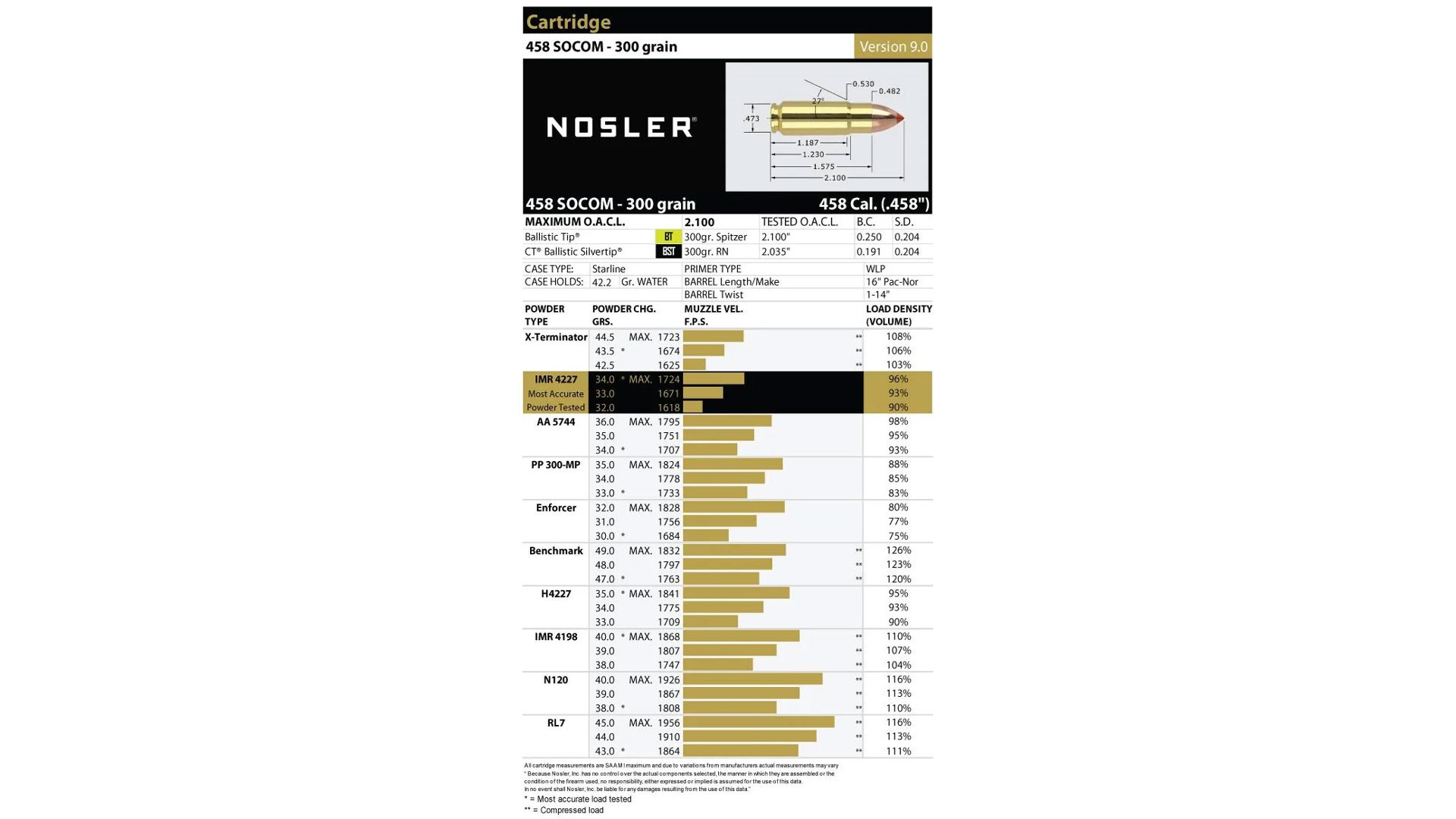
Technically, there’s not a SAAMI spec for the .458 SOCOM, which means there’s no true oversight for the cartridge, but it’s become common enough that certain aspects of the cartridge are agreed upon and can be validated scientifically. For instance, it must be shorter than 2.26 inches in length, as that’s the maximum cartridge overall length (COAL) capable of fitting in an AR-15 magazine and lower receiver. We know it also operates at a much lower pressure, as no company offering data on the round—such as Hodgdon and Nosler—would publish anything dangerous, and they often have notes and disclaimers about starting loads and increasing from their suggested starting points and not exceeding maximum pressures. SBR Ammunition, a company that works almost exclusively with the .458 SOCOM round (as well as many other sources) suggests the .458 SOCOM’s max pressure limits are about 35,000 PSI due to bolt-thrust limitations. All of this to say, these aspects of the .458 SOCOM are what make it a winner. Why?
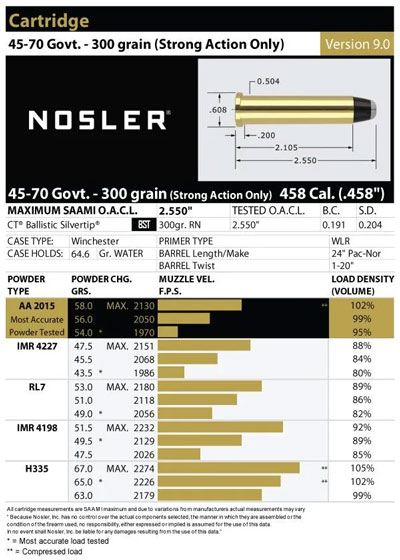
Let’s start with the COAL of each cartridge. The .458 SOCOM fits well within the AR-15’s mag well spec, unlike the .45-70. This is important for a couple reasons. First, it means the .458 SOCOM has a shorter, more rigid bolt. While this isn’t always the case, shorter bolts tend to be more inherently accurate because they flex less under fire. Second, case length has multiple influences on powder burn. The .458 SOCOM’s case is more efficient as it burns less powder to achieve the same ballistics. The powder column in the .458 SOCOM is also shorter due to the shorter case. This can further enhance accuracy because total combustion of all powder inside the case is completed in a shorter timeframe resulting in more consistent pressure spikes, which in turn keeps velocities of the bullet relatively similar. Lastly, the gun can be made lighter because the action and barrel can be shorter than that of the .45-70’s barreled action; less metal is needed in the action and barrel, and the barrel can be shorter without compromising ballistics due to the reduced powder capacity inside the .458 SOCOM case. Additionally, the .458 SOCOM’s lessened powder capacity means that a 16-inch is all that’s needed to experience complete powder burn. This, too, results in an overall shorter firearm, making it perfect for ground blinds, tree stands, truck guns, or home defense. To understand all this in application, let’s look at some numbers with both cartridges using a typical 300-grain bullet.
Per Nosler, the COAL of the .458 SOCOM is 2.100 inches; Hodgdon load data has a COAL of 2.245 inches. In either case, that fits well within the AR-15’s mag well spec, unlike the .45-70, which Hodgdon measures COAL at 2.775 inches and Nosler gives a COAL of 2.550 inches respectively. So after doing some basic math, assuming the shortest .45-70 cartridge measurement is used, and the longest .458 SOCOM measurement is used, that’s still a .305-inch difference in COAL lengths. Going the other route, the .458 SOCOM is a half-inch shorter (and then some—it’s even more of a difference using Nosler’s shortest measurement for the .458 SOCOM) than the .45-70. In any case, that’s a massive change in internal case volume for powder. Looking at both companies’ reloading data, the .458 SOCOM pushes the same bullets to the same velocities using approximately 10- to almost 30-grains less powder than the .45-70. That doesn’t sound like a lot until you consider that’s a fifth to almost half the powder the .45-70 uses. Here are a few examples. Using RL7 in both cases (per Nosler data), the .458 SOCOM uses a max load of 45 grains of powder to the .45-70’s 53 grains. Hodgdon’s data and H4198 powder, the .458 SOCOM uses a max load of 36.1 grains (a compressed load; let’s say 36 for easy math). The .45-70? It uses 63 grains of H4198. So what does all this mean?
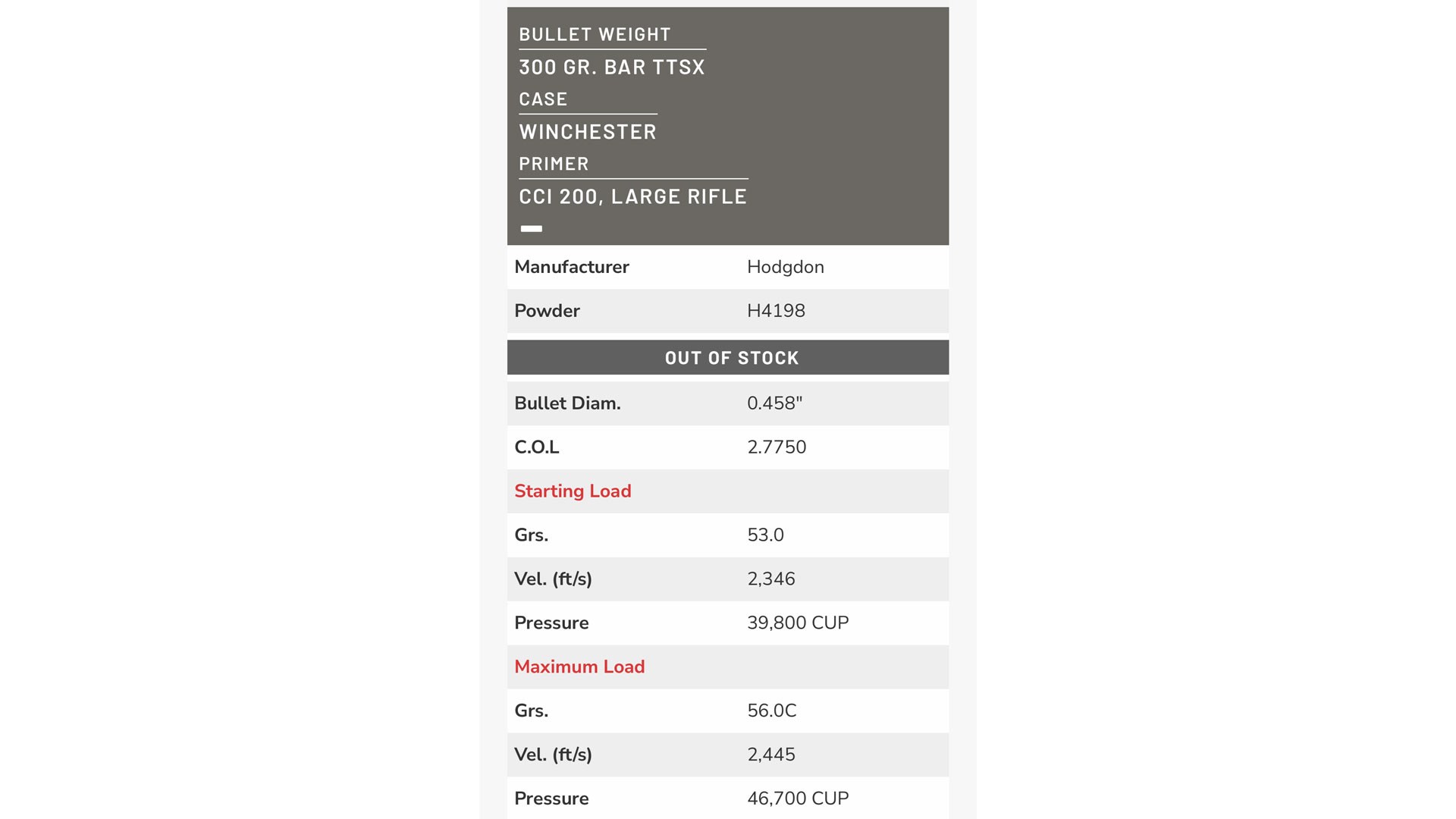
In other words—again assuming best case scenario for the .45-70—for every five .45-70 cartridge loaded, an extra sixth cartridge could be loaded with the powder saved by reloading the .458 SOCOM. In the worst-case example, scaling that to a pound of powder (there are 7,000 grains in a pound), for every pound of powder, almost 200 .458 SOCOM rounds could be produced (194 exactly), while only just over 100 rounds (111 exactly) of .45-70 rounds could be loaded using the H4198 powder. Over the course of one’s lifetime, the .458 SOCOM is a significantly cheaper shooting proposition. Currently a canister of powder retails between $30 and $40 (obviously, it gets exponentially more expensive when prices skyrocket). Couple that cost with brass. I mentioned the .458 SOCOM’s extremely low operating pressure of 35,000 PSI. The .45-70 when fired off using this modern data, creates about 20,000 more PSI with its larger powder column. So brass life for the .458 SOCOM, since it’s running at pistol-level pressures, will last significantly longer. Furthermore, the pressure these guns produce also contributes to recoil. Assuming the rifle is 7.5 pounds in each case (a common RRA .458 SOCOM is 7.6 pounds and the newest Marlin 1895 Guide guns us 7.4 pounds), the .458 SOCOM produces less than half the recoil of the .45-70 when using the respective powder charges of H4198 in each gun (36 grains in the .458 SOCOM and 63 grains in the .45-70); recoil energy is just under 22 ft.-lbs. in the .458 SOCOM compared to just under 48 ft.-lbs. in the .45-70
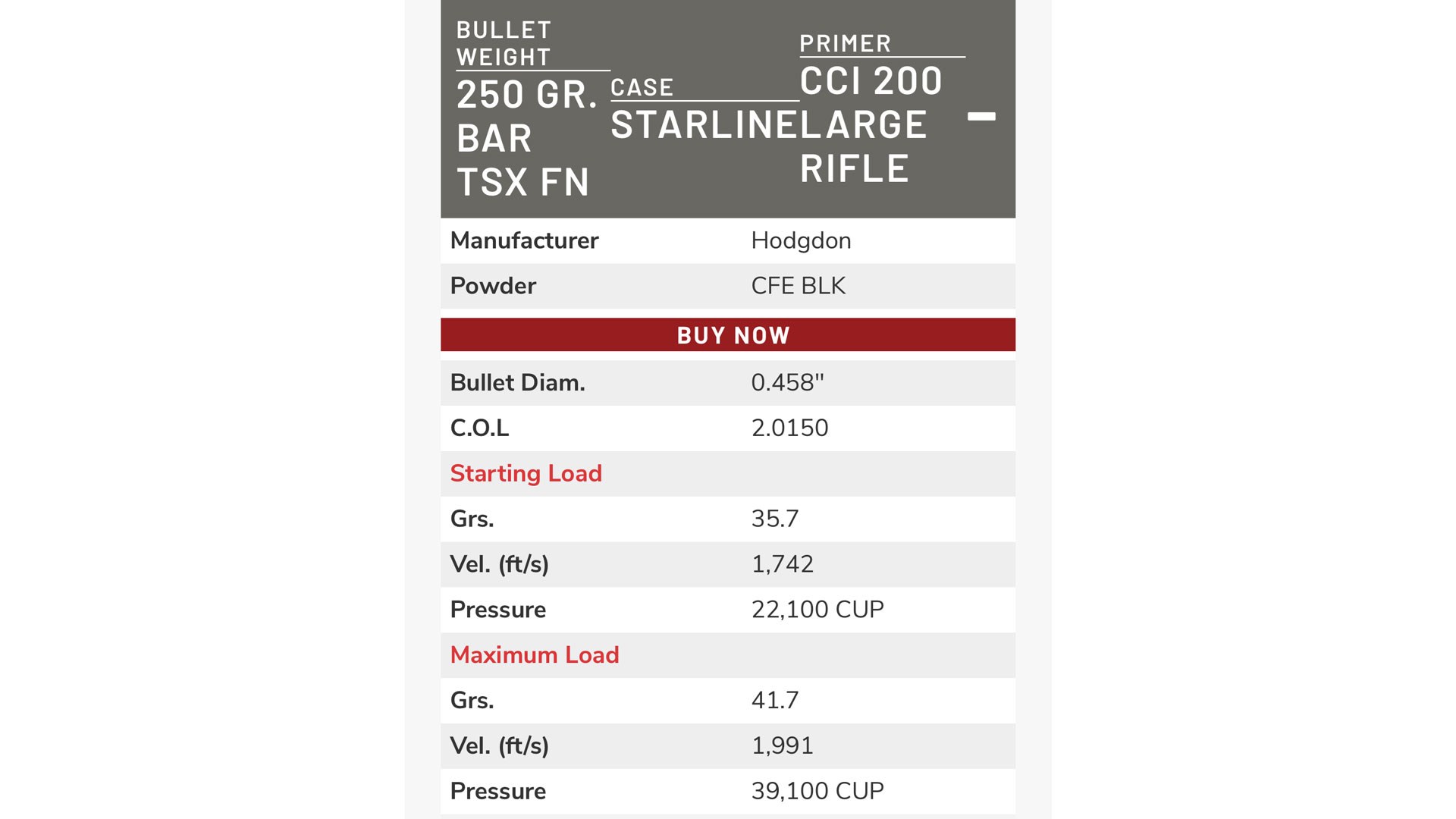
In looking at these loads, I’d be doing a disservice to the .45-70—and you, the reader—if I didn’t mention those charges were pushing the .45-70’s bullet faster by several hundred feet per second. Like I said earlier, more moderate loads are much closer to the .458 SOCOM data Nosler published. Hodgdon’s data used here is for modern rifles (there is other data for older actions and lever-actions specifically). Your grandpa’s old .45-70 couldn’t take the Hodgdon data and those loads’ pressures. In other words, the average .45-70 would be on par with the .458 SOCOM’s velocity: 1,800-1,900 fps. And if it’s speed, ballistics, and long-range capabilities you’re after, you won’t be looking at either of these cartridges anyway, which is why the extra several hundred feet per second here is a moot point, and why I didn’t mention it earlier.
Outside of the cartridge specs and reloading data, the .458 SOCOM is intended for semi-automatic rifles, which means—unless you’re John Wick or Jerry Miculek—you’ll be able to get follow up shots off significantly faster in a .458 SOCOM than you would a .45-70. That follow-up speed doesn’t include the speed lost because of the increased recoil impulse of the .45-70, either. Reloading the firearm is also much faster, as the .458 SOCOM is fed from a detachable magazine, unlike the average .45-70, which is typically single loaded into a tube-style magazine. And the average .458 SOCOM rifle is much more customizable than the .45-70 lever gun, as it takes all AR-15-compatible parts, such as stocks, handguards, grips, sights, lights, lasers… Anything you might ever want to put on an AR-15, you can put on a .458 SOCOM.
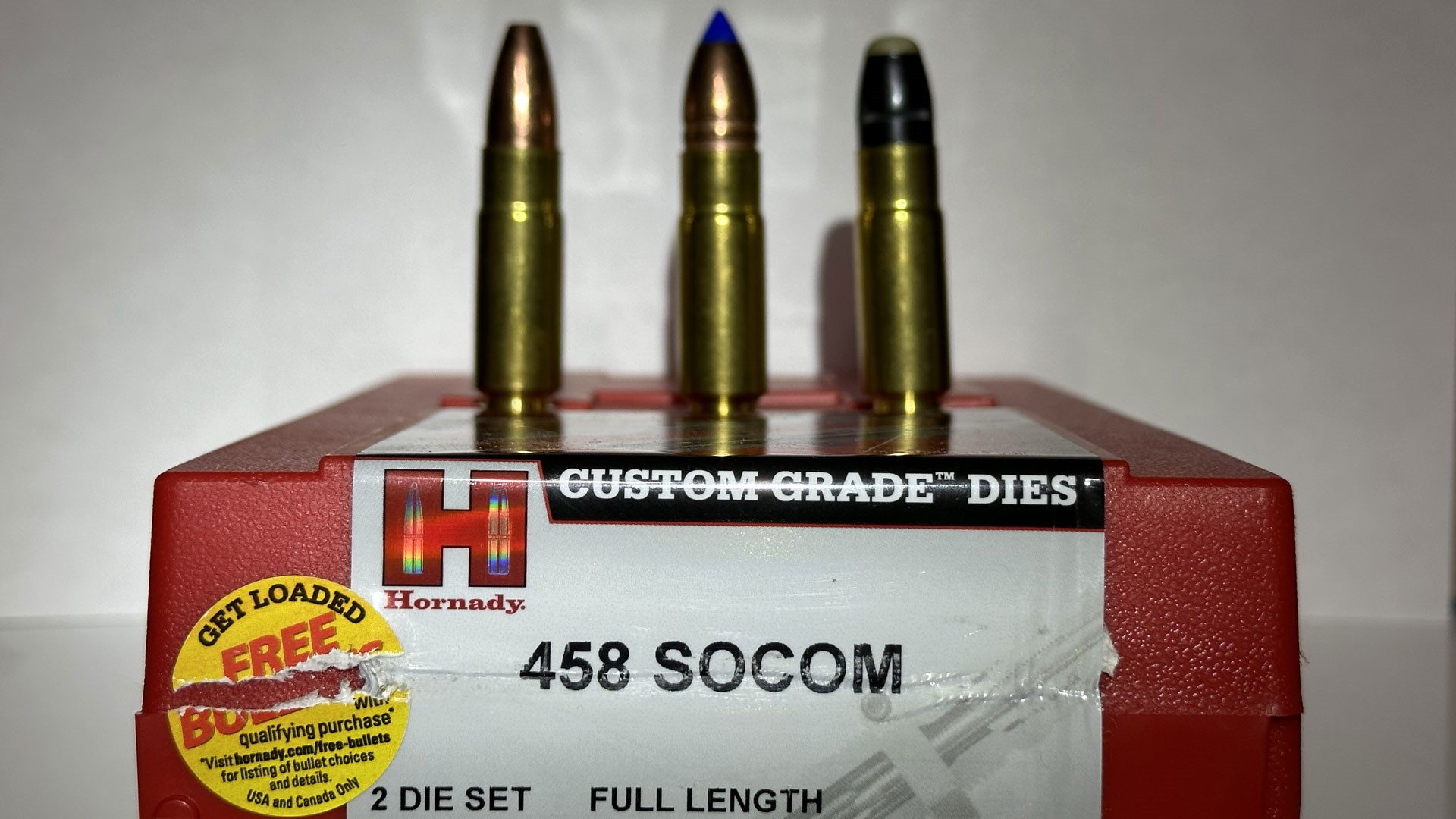
So to summarize, the .458 SOCOM outperforms the .45-70 in the following ways: it has the potential for shorter overall rifle length yielding more maneuverability; customizability in the AR-Platform (and the benefits that come along with it); cartridge efficiency; action-length rigidity; shorter barrel performance; handloading costs; and it’s softer shooting, all for the same 300-grain bullet propelled to just shy of 2,000 fps. The .45-70 has nostalgia, of course, and for being more than a century old, it does still hold its own. But if I wanted to shoot an antique, I’d just shoot a muzzleloader.













